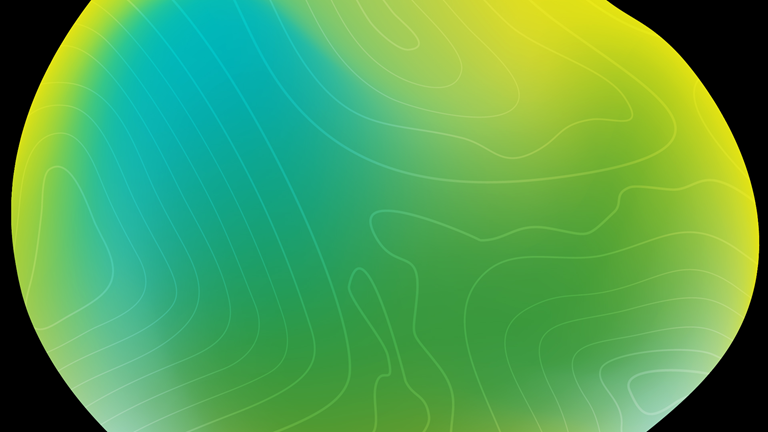
Theatre Studies
Theatre as an art form has been integral to all cultures for millennia. In VCE Theatre Studies, students gain insight into the histories and rich possibilities of theatre through interpreting and producing scripts. One aspect of VCE Theatre Studies requires students to select a monologue from a prescribed list. They explore the contexts of that script, including the time, place, culture, playwright, theatrical style, language and intended meaning.
Students interpret the selected monologue, either through acting and direction or through 2 areas of design that could include costume, props, makeup, set, lighting and sound. A selection of exemplary student design works are showcased in Top Designs.
Outstanding students who interpret their monologue through acting and direction are featured in the VCE Season of Excellence Top Class performances.
Cleo Hunter
Loreto Mandeville Hall, Toorak
Wurundjeri Country
Chorus (Antigone, Jean Anouilh)
Costume and sound design: Knit balaclava, cotton, tulle, knitting needles, lace, red paint, red ribbons, boots, violin
My costume and sound realise the 'Chorus' character in Jean Anouilh's Antigone, a play both written and performed in France during the Nazi occupation of World War II. Informed by Anouilh's subtle political criticisms, my interpretation of this character has been recontextualised to reference the ongoing conflict between Russia and Ukraine, placing my audience in the midst of this contemporary humanitarian crisis. In Sophocles' original rendition of Antigone, the chorus acted as a mirror for the audience, guiding their perspectives on the plot. Driven by this notion, I have chosen to imbue the chorus with a clear and passionate identity, primarily through the red balaclava, an iconic symbol of the infamous Russian punk protest band Pussy Riot, who have continued to revolt against Putin's totalitarian regime. The needles on the black skirt reference Eurydice, who meets death by her own hand. They are also informed by the infamous 'tricoteuses', women who protested by knitting liberty caps between decapitations during the French revolution. As such, the needles symbolise how tragedy can surpass time’s limitations. Themes of passion and revolution are solidified by the sound design, which includes a live and emotive violin performance. The bed track includes sirens and chants from a recent anti-war protest, preventing passivity from the audience as they are reminded of the horrors of war, both in the play and our 21st century world. These sounds were extracted from Thousands detained in Anti War protests against Russia footage, courtesy of Radio Free Europe/ Radio Liberty.
Tamsen Howard
Sacré Cœur, Glen Iris
Wurundjeri Country
Philoctetes (Paradise, Kae Tempest)
Set and prop design: Wood, metal, sand, glue, leaves, rope, plastic elements
Kae Tempest's Paradise is centred around an injured man who has spent 10 years abandoned on a remote island, living in a cave that has become both his sanctuary and his prison. My design concept emphasises the juxtaposition between the play’s ironic title and its content. Paradise is a bold socio-political statement. The character Philoctetes functions as Tempest’s raisonneur, confronting the audience with a tirade about the superficiality of the lives we have created. They comment on our morally corrupt world, which has been ravaged by power and greed, exploitation of people, and environmental destruction caused by the Western world's overconsumption. The stage directions state that the island, once a thriving shipping port, now serves only as a detention centre and rubbish dump. This inspired my use of cyclone fencing and oil drums. The playwright was inspired by their trip to a Sri Lankan fishing village, seeing how the effects of war, natural disasters, and climate change had impacted the villagers’ lives. This also informed my mise-en-scene: Buddhist iconography, the colours of the Sri Lankan flag, palm leaves, sand, fishing net, a discarded tea chest and a motorbike tyre. The clash of visual cues is intended to communicate Philoctetes’ internal conflict, his nihilistic views (through memento mori) and the hope he seeks in spirituality and nature.
Jazmin Golding
Sandringham College, Sandringham
Bunurong Boonwurrung Country
Alquist (Rossum's Universal Robots, Karel Čapek)
Set and prop design: Timber, metallic spray paint, LED lights
In Karel Čapek's play R.U.R., the character Alquist is left as the last human alive. My interpretation of the play aims to convey his desperation and distress. Through my set and prop design, I incorporated angular and geometric composition to construct an abstract version of reality. In the construction of Alquist’s desk and chair, I created a disheveled and worn finish by distressing the timber and staining the desk with ink. The weathered state of the props found on Alquist’s desk aim to further convey his loneliness and desperation to save humanity. The metallic paint used for the robotic set piece conveys a futuristic aesthetic, representing the robots in the play. The cold and striking white LED lighting used in the set has an artificial aesthetic that contrasts the humanity represented in Alquist’s furniture. The test tubes and silver holder align with the futuristic laboratory aesthetic to strike a balance through their similar colour palettes, linear composition and cool tones of steel and cobalt blue.
Alysha Dodd
Eltham College, Research
Wurundjeri Country
Tetsuro Shigematsu (Empire of the Son, Tetsuro Shigematsu)
Set and costume design: Solid pine wood, cellulose paper, vinyl records, CDs, tea-stained paper, film negatives, wheels, hinges, string, wooden pegs, timber, cotton cushions, mirrors, photo albums, projector
My set design incorporates metaphors for the play’s complex father-son dynamic. The room divider is inspired by Shoji, used in Japanese architecture. I use this in my design to enhance the similarities between Tetsuro and his father Akira and shed light on the complexities of their relationship. Photographs from Tetsuro’s life are projected onto the divider, accompanied by a soundscape during vital moments of the playscript. This projection and sound highlight moments of shared intimacy and connect to Akira’s work in radio. Other set elements include vinyl records, which are juxtaposed by CDs to emphasise the intergenerational and cultural differences between the two men. Mirrors represent the way their personalities reflect each other, despite the distance between them. Finally, old letters that Tetsuro’s father gave him apologise for forcing ideas upon him. My costume design enhances Tetsuro’s identity as explored within the playscript. As Tetsuro matures, he reflects on his lifestyle and realises he mirrors many of his father’s personality traits. This is depicted through a black suit, similar to an image found in the playscript, where Akira is nearing Tetsuro’s age. I have incorporated Japanese cuff links, which symbolise origins and beginnings. Additionally, a blue tie to represent Buddha references Tetsuro’s healing. Through these design choices, Tetsuro is displayed as a young man entering a journey of self-discovery and acceptance.
Photographs from Empire of the Son by © 2017 by Tetsuro Shigematsu, published by Talonbooks, Vancouver, BC, are used by permission of the publisher.
Ashley Syers
Ivanhoe Grammar School, Ivanhoe
Wurundjeri Country
Jean (Dead Man's Cellphone, Sarah Ruhl)
Set and sound design: Wood planks, canvas, metal table, fold out chair, black spray paint, duct tape, hot glue, wooden pole, metal ring, hook
My set and sound design respond to the character of Jean in Sarah Ruhl's play Dead Man’s Cellphone. The interplay of my design elements reflects Jean’s feeling of isolation in the monologue, where there is a sense of human disconnection amidst the ever-evolving age of new technology. My sound design evokes the ambience of a cafe, surrounded by the sounds of online activity. Rather than the expected bustle of conversation, having a solely technological noisescape encapsulates the destructive and numbing qualities of technology. My set took inspiration from Edward Hopper's painting Automat. Set in a cafe, Hopper’s painting depicts a woman trapped inside an artificial environment. She is decentered, communicating a sense of discomfort and displacement. I have reflected this through my decision to locate the cafe off-centre and not take up the entire stage space with my design. Jean is depicted in a cramped environment, with the table and chair set on an enclosed checkerboard canvas flooring, next to a large window. The set physically depicts an intense feeling of human loneliness, and also emphasises Gordon's literal disconnect from life itself by positioning him at a table outside of the realistic cafe environment.



